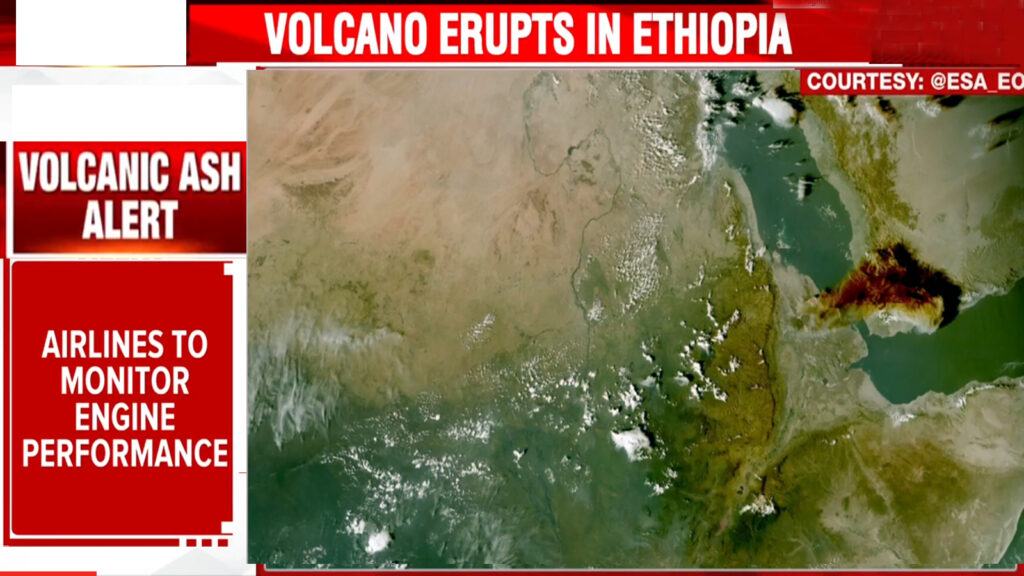
Ethiopian Volcano’s Ash Reaches India: Why Flights Suffered but Delhi’s Air Didn’t
A rare volcanic eruption in Ethiopia’s Afar region sent a huge cloud of ash and sulphur dioxide across continents — and it reached India faster than anyone expected. The Hayli Gubbi volcano erupted after nearly 12,000 years, shooting ash up to 45,000 feet into the atmosphere, where fast westerly winds carried it across the Middle East and into Indian skies.
So, what’s inside this ash cloud?
Fine volcanic ash, tiny glass-like particles, gravel, and high sulphur dioxide levels — all of which can be dangerous for aircraft engines. That’s why several flights in and around Delhi faced delays, cancellations, or route changes.
But here’s the relief:
Delhi’s already poor air quality did NOT get worse because the ash plume is far above the air we breathe — nearly 25,000 to 45,000 feet high. It may cause hazy skies, but it won’t significantly affect ground-level pollution.
Why flights were hit
The DGCA warned airlines to avoid certain altitudes after it became clear that volcanic ash was passing through Indian airspace. As a result, airlines like Air India, IndiGo, and SpiceJet had to reroute flights — especially those from the Gulf and Southeast Asian countries.
Will this affect weather or the monsoon?
Scientists say the risk is low, but they’ll keep monitoring. Large eruptions can sometimes influence climate or rainfall patterns by cooling the air and altering winds, but this event is not strong enough to cause major shifts.
A reminder of nature’s reach
A volcano erupting thousands of kilometres away can still affect daily life — disrupting flights and creating high-altitude haze — even when the ash never touches the ground.
